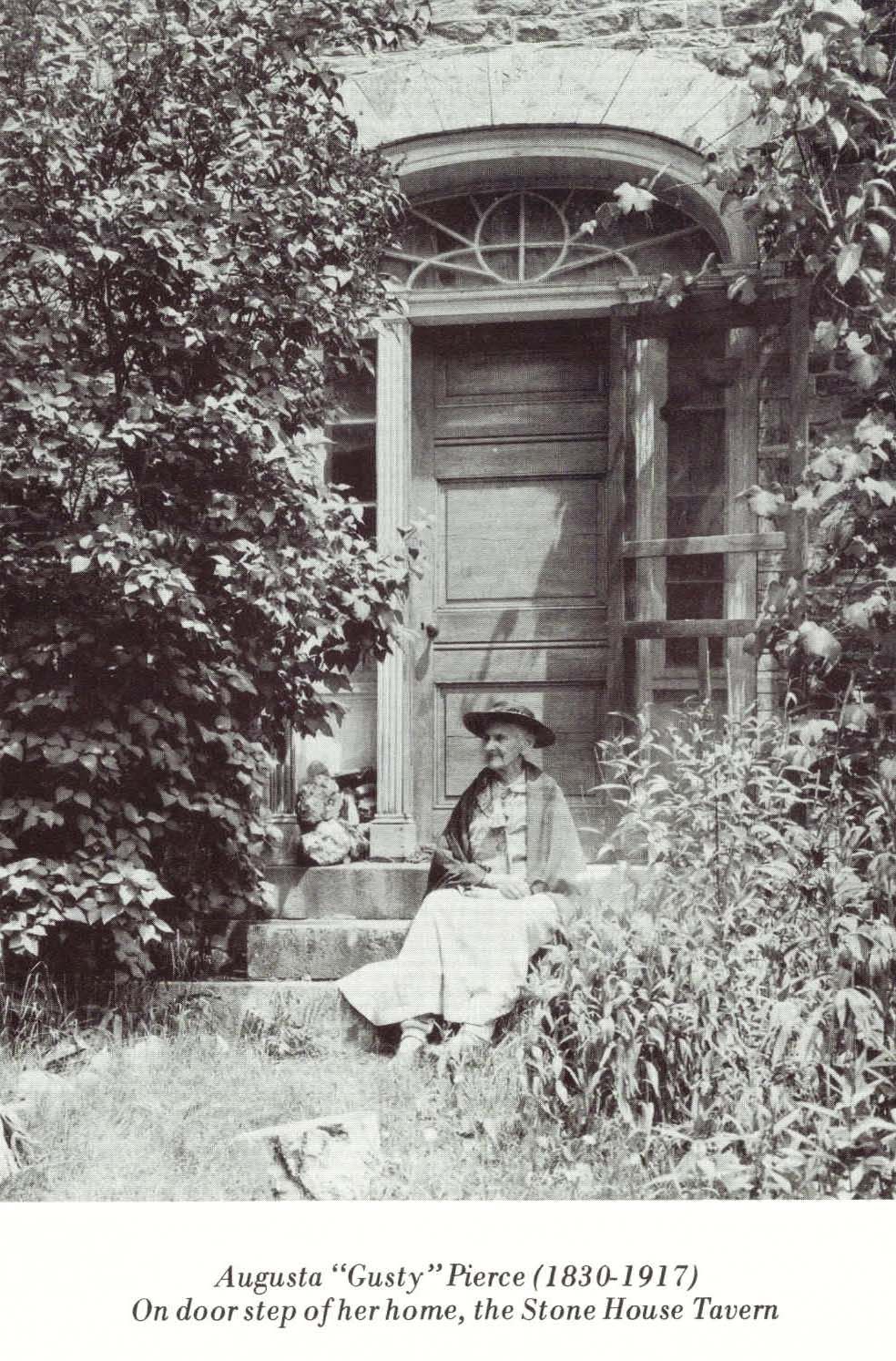Haunted Chesterfield

Tales from the Grave
If you google “Haunted Chesterfield NH”, Madame Sherri pops up immediately. In fact, the Madame Sherri Castle is one of the top ten haunted places in New Hampshire. Google's artificial intelligence (AI) has a field day describing how strange noises, ghostly figures, and a chilling atmosphere have been experienced in and around the castle ruins. The AI even infers that Madame purposely sold her property to Ann Stokes on the day she died as an act of preserving her connections to the land beyond the grave. Dramatic indeed, but Madame Sherri was famous for her theatrical ways!
The ruined Castle is not the only alleged haunted place in Chesterfield. Another possible location is the 1831 Stone House Tavern. A reliable source, whose family was leasing the building in the last century, explained how his family experienced unearthly visits which included strange noises and bangs in the night. Multiple investigations could not determine their origins. Eventually, the noises and bangs were credited to the age and structure of the building. Then, all was revealed when during a sit-down dinner, a completely unaided cookbook went sailing across the kitchen. Everyone saw the flying cookbook, but no one could explain it. This occurrence put the “nail in the coffin". An immediate decision was made to end the lease and move.
Three generations of Pierces lived in the ell of the Stone House Tavern, and several Pierces most definitely died in the building. Augusta "Gusty" Pierce was the final family member to pass on. She was a school teacher known for her extreme feistiness. Opinion has it that Gusty's ghost is a good candidate for having hurled that cookbook!

Southwest Chesterfield’s hardscrabble area, now a part of Pisgah Park, has yielded some otherworldly experiences including strange noises, ghostly figures appearing and disappearing, and footsteps in the dark. The 21-square miles of park once supported several communities and cemeteries. When the park was formed, all structures were removed to allow for a total wilderness feel. However, four cemeteries still remain, dating 1790 - 1904. Most of the bodies were moved. But alas, some of their spirits have lingered on.
“Pisga” is Abenaki for dark, and indeed nightfall can take on an unholy eeriness in Pisgah Park. There are several documented incidents that contributed to the park’s alleged haunting. Two are based on jealousy. In 1931, a confrontation between suspicious partners in a lumber company, Mr. Milke and Mrs. Collins, led to a murder-suicide. Mr. Milke decided to end the argument with a double-barrel shotgun blast that killed Mrs. Collins before slitting his own throat. Another incident was similar but more pointed. A fight over a woman involved Mr. Maddock and Mr. Davis. When Mr. Maddock took an ax to Mr. Davis, Mr. Davis retaliated with a shotgun blast to Mr. Maddock. Now, these pairs continue their feuding with chilling and unearthly noises throughout the park.
On Dec. 30, 1891, The Park’s Lilly Pond was the site of a tragedy. A skating party had ventured out onto the pond to enjoy an afternoon of sport. The party included Mr. Hill, his two children, and his nephew, Mr. Sprague, an avid ice fisherman. However, things took a turn for the worst when Mr. Sprague suddenly broke through the ice. Mr. Hill seized a board and rushed to his rescue. While still at least 50’ away from the struggling man, Mr. Hill plunged into the watery depths. Neither man survived the ordeal. Mr. Sprague had been a Union veteran of the Civil War. He apparently has found a relaxing way to spend eternity. To this day, hikers have reported seeing a man in a Civil War blue uniform fishing on the opposite shore of Lilly Pond.
Removal of residents was a required part of the park’s establishment. One gentleman in particular suffered greatly from being displaced. In 1972, Vincent Dubriske was evicted from his cabin on a peninsula in one of the ponds. Brokenhearted, he still visited the park daily until his death in 1976. He was known for collecting ginseng roots to sell. Also, he used to carve his initials on beech and birch trees throughout the park. Now his spirit is occasionally seen wandering the hills in search of ginseng roots or near trees that still bear his initials.
Our last ditty is a story told by Clifford "Skip" White. In the late 1920s, Roger Spaulding, who lived on the farm where the Chesterfield library now stands, decided to take his dogs coon hunting. This was a common sport that provided meat and marketable fur. It was always done late at night. The dogs were trained to follow the raccoon scent, baying the entire time while the hunter follows their sounds. Hence, coon hunting involves nighttime bushwhacking at a dead run through the woods. While trying to keep up with his dogs, Roger came upon the Schlichting homestead off Old Swanzey Road. At the time, the building was abandoned. Suddenly, Roger heard violin music. As he approached the house, the music got louder and louder. It was pitch black and there were no lights, just music coming out of the deserted building! Well, that was enough to call in the dogs and head for home! It was a long time before Roger Spaulding went coon hunting again.
(Later, Roger learned that a local musician enjoyed going into the house to practice his violin at night. He found the acoustics in the building outstanding.)




